‘Design could never be not political’: Lessons from iconic designer Enzo Mari
The late Enzo Mari was a design pioneer, polemicist, and fierce believer that beautiful and useful design should be for the many, not the few. A retrospective of his work opened at the Triennale Milano last fall. The massive exhibition, with over 250 pieces spanning the designer’s 60-year career, opened mere days before Mari passed away due to complications related to COVID-19. Mari had asked that, after this exhibition, his work not be shown for another 40 years.
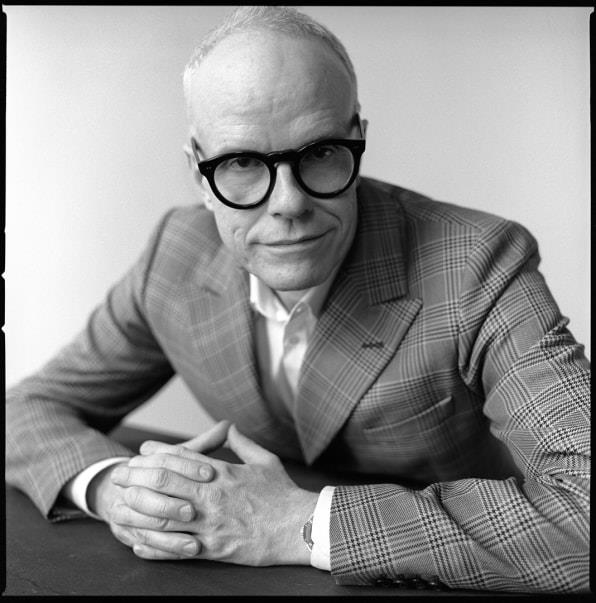
[Photo: Brigitte Lacombe/courtesy Triennale Milano]
The exhibition was curated by Hans Ulrich Obrist, whose relationship to Mari spanned decades. It reopened on February 2, after being shut down due to COVID-19 health restrictions, and offers a new look at the designer’s legacy. Here, Obrist reflects on Mari’s artistic vision, his critique of contemporary design, and his legacy.
This interview has been edited for length and clarity.
Fast Company: What was your curatorial strategy for this retrospective? How did you go about designing the space?
Hans Ulrich Obrist: We very much followed Enzo Mari’s wish because Mari was still alive at the beginning of the preparations. He was involved with his late partner, Lea Vergine. We were discussing [the] design of the exhibition, and we realized that he had actually done this exhibition in Torino, for the Galleria Civica d’arts Moderna, about 10 years ago, which was a retrospective entirely designed by him. We found it exciting that we could have it designed by him and then build on that.
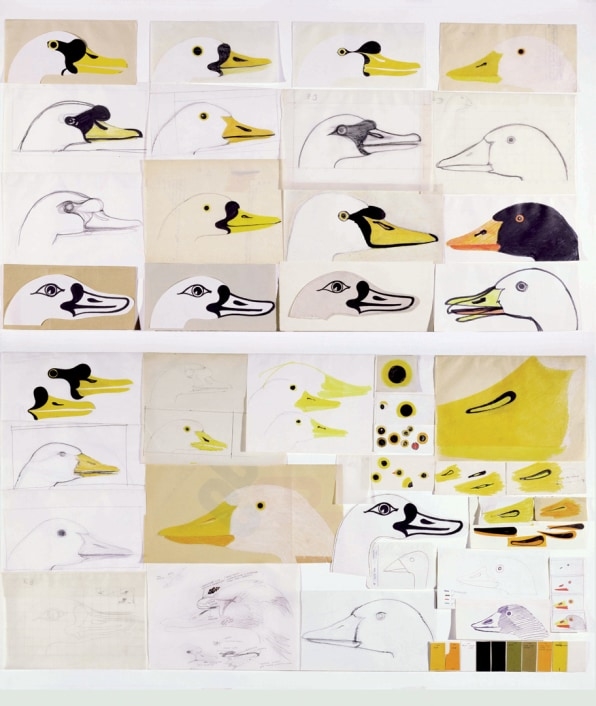
FC: How would you describe Mari’s guiding artistic vision, and how can we see that carry through his work?
HO: First of all, he’s a Renaissance figure. He is many things at once. He’s an industrial designer, furniture designer, an exhibition maker, an artist, a manifesto writer, a polemicist, all in one. He’s also a great pioneer of sustainability. He was always saying, design has to last. He wanted design not to waste any resources; this idea of the long duration. His mission was always to liberate us from the short-term-ism of our world.
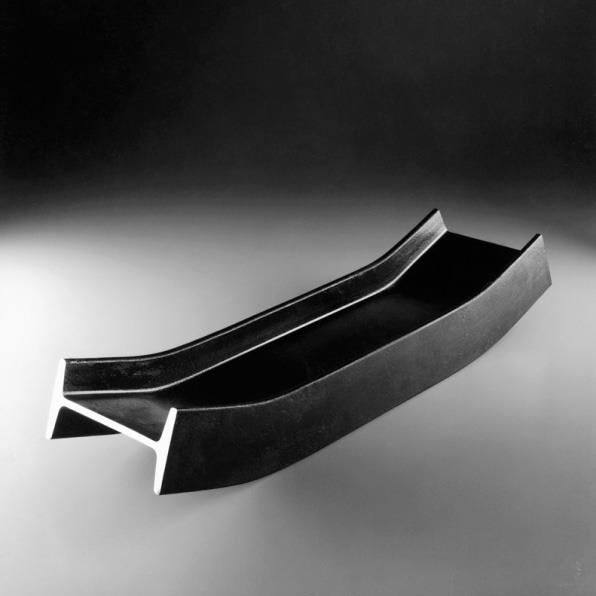
FC: How was Mari able to successfully work across disciplines? What was the throughline for him?
HO: Things were always very much connected to communism, the arts and crafts movement. It’s a lot to do with the idea of knowledge. His work is very much about communicating knowledge. That’s why he was so antagonistic to the design world’s interest in profit, in commercialization, and industry brands, advertising. For Mari, design is only design if it communicates knowledge.
FC: Can you expand on that? And by that measure, when does design fail?
HO: I think in his view, design fails if it’s not long durational; if it’s disposable and doesn’t last. I’ve had a calendar by Enzo Mari ever since I was a student in the ’80s, and the calendar is still fresh as if it happened (March 11, 2021). I think that’s a great success. Also his passion for transformation, because form is everything for him. He wants to form these models for different society, which is also his connection to politics. I think if design cannot create models for a different society, it somehow fails.
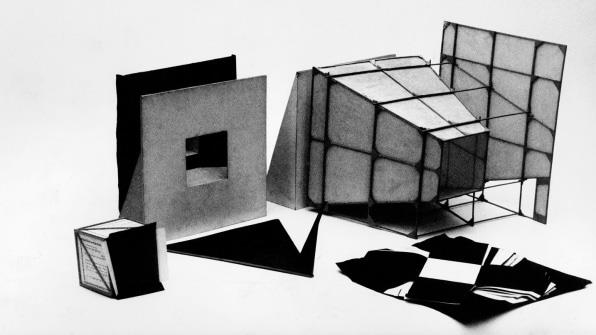
FC: As you mentioned, Mari had a particular disdain for the commercialization and corporatization of contemporary design. And so on some level, it seems there’s an inherent tension between him and the industry he was a part of. How did he grapple with that?
HO: He was very antagonistic to this idea of the design world being interested in profits, and at the same time, he did of course collaborate with design brands in the ’60s and ’70s. It has a lot to do with this incredibly rich generation that had the luck to have risk-taking manufacturers on their side. This amazing list of fabricators matched the amazing list of designers. It’s that match which produced the amazing miracle, what I call the ‘Milano miracle.’
FC: And what about design being created today, say by the likes of Apple and Google?
HO: It’s interesting that Apple had this relationship with Jony Ive for many years. [Similarly], Mari had long-term relationships with many of the fabricators of his generation. I don’t know if today it’s possible to push companies the way Mari was able to push companies. Danese and so on—they had no intention whatsoever, Mari once told me, to fabricate toys and things for children, but Mari convinced them. I don’t know if that would work today. They went all the way. They went on the trip with the artist, the designer.
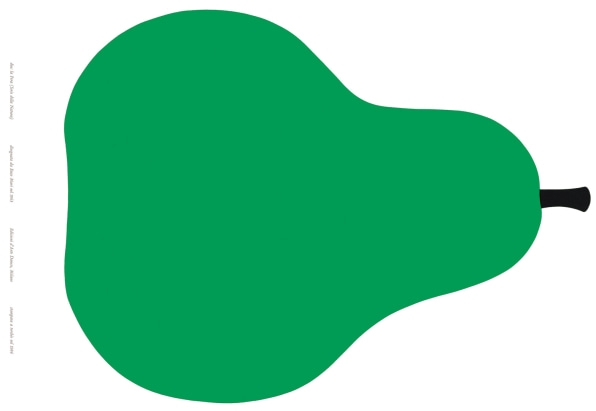
FC: Why don’t you think that would work today?
HO: I don’t know, I mean we actually may need to make it work again. It’s why I believe in the artist placement group, [which] was this great idea that every company would have an artist in residence. That’s a very productive thing—if artists are put in this position then real change can happen. I think we need to fight for that and try to bring back the idea that every bigger brand would have an artist in residence not only to design products, but it’s important that it can go beyond that.
I really do think that the collaboration with Jony Ive and Apple is one of the great historic, fascinating examples. That’s a unique journey they made together and they pushed each other in the sense of that Jony Ive designed products for Apple they needed, but also he brought in a language. We need more companies who bring artists in such a close relationship and that’s where we can learn from the APG.
FC: So, considering those similarities, is it possible for design to be apolitical in Mari’s view?
HO: No. I’ve been reading the little booklet of 52 Interventions. It’s a beautiful publication from 1971, which was edited by his late wife Lea Vergine. It’s fascinating because… he gives several steps how to go toward utopia. This is a very concrete way of making utopia real. For him, design could never be not political because it was always about transformation of society.
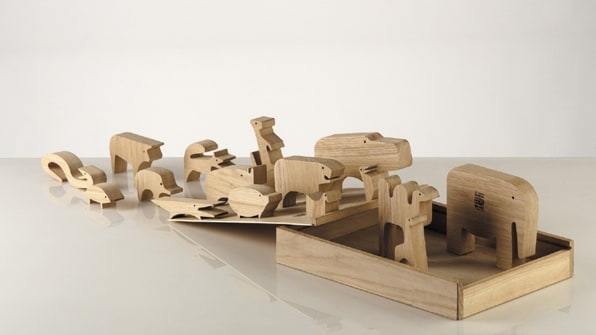
FC: You had a long-standing relationship with Mari. What had you learned from Mari over that time?
HO: Definitely that we should look into long duration. I’ve learned from him how to always think about how an object can not become obsolete, not become consumed, but can stay relevant over time. I’ve learned from him also that we need to be on a journey without compromise. His journey was a journey without compromise. And his Renaissance, to bring it all together. I think if you want to solve the big pressures of the 21st century, you can only do that if you go beyond the fear of pooling knowledge and bringing everything together.
FC: And what about on a personal level?
HO: I realized his polemicist side. We sometimes went to see exhibitions. He usually didn’t go to design shows, but sometimes he went with me to the Salone del Mobile. He got genuinely upset when he saw things that he thought would be frivolous, or wouldn’t transport knowledge. But I also learned from him to think about content, to think about society, to think about how art can reflect the social contract.
FC: Turning to the current exhibition: What are some new insights about Mari’s career and works that we’ll learn from this show?
HO: He created 2,000 projects over his long life, and we’ve chosen about 250. Paintings from the ’50s, from the ’60s, his early design series. There’s a lot to discover in the historical section, which follows the Torino design. But then there are the research platforms. There is a lot to discover about his studies into mass production. You can also find out a lot about his exhibition designs. He created amazing exhibition designs over the years. There is some degree of amnesia in exhibition designs because exhibition designs are not always remembered, you know? I think we should learn from that quite a lot about how he continues to travel in new generations.
FC: What are some key pieces in the exhibition that everyone should know?
HO: The calendar, because I’ve always had a passion for the calendar. The autoprogettazione because it was not only the idea of democratization of design, which is historic, but it’s striking also that it goes with do-it-yourself-instruction. I’ve been obsessed by the new proposals for hand-craftsmanship of marble bases from the paros series from ’64, and the connection that has to the arts and crafts movement and the politics and how he always saw design as inherently political. So I began to understand how many dimensions there are to his work. The traveling book case was important from ’66, the calendar Formosa from ’63. The putrella I loved.
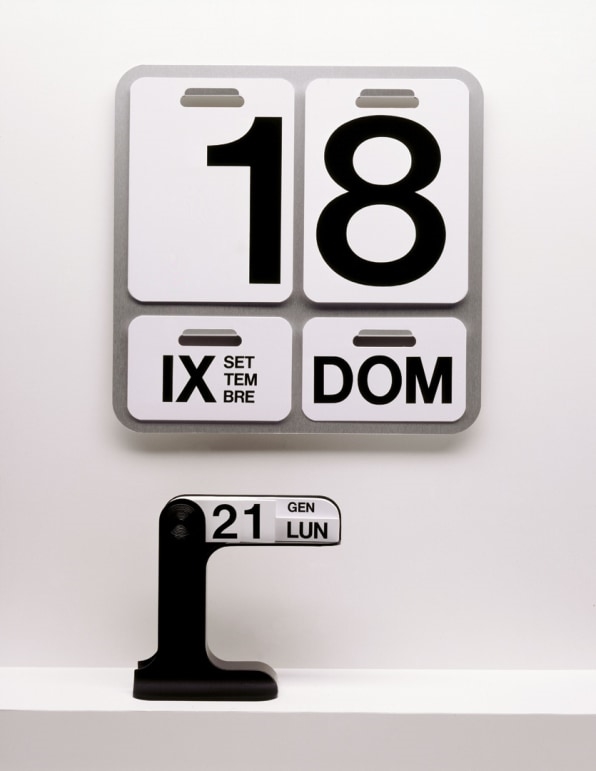
FC: Contemporary designers, like studio FormaFantasma, have taken inspiration from Mari’s belief in sustainability and accessibility. What is Mari’s longstanding impact on the design industry?
HO: His impact on the design industry is that his objects continue to be produced. But also a new generation of artists are deeply inspired by him. His impact on the design industry is that his objects continue to be produced. But also a new generation of artists are deeply inspired by him. [Artists] Dozie Kanu, Rirkrit Tiravanija, and Danh Vo made projects out of the autoprogettazione. That project lives on forever. We have also his work with his children. Dominique Gonzalez-Foerster made an homage to him and to Iela Mari. There’s so many aspects where his work continues to travel all the time.
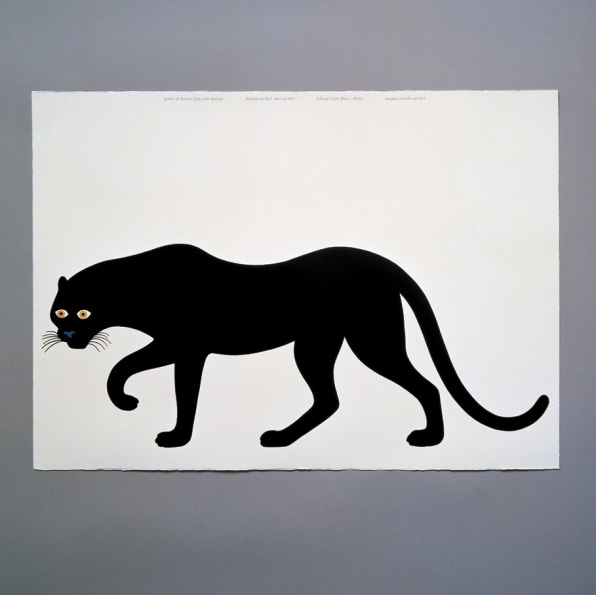
FC: In the exhibition catalog, you referred to the timelessness of Mari’s work. Why is it then that he didn’t want to show his work for another 40 years?
HO: For now, he wasn’t happy with the design world. He probably assumed that in 40 years it would be a different time and for him 40 years is a very short time. If you think about how short our life is in relation to the history of the planet. It’s interesting.
FC: Why was he unhappy with the design world today?
HO: It’s the commercialization, it’s the short-lived-ness. It was too short-termistic; too much based on events. He was giving priority to longterm and not seminal history. For him, seminal history was less important.
FC: So he didn’t have much of a reason to hope ever since he declared design dead?
HO: A lot of artists declare art dead and continue to do art. That’s a paradox.
![]()
![]()
![]()
![]()
![]()
![]()
![]()
![]()
![]()
![]()
![]()
![]()
![]()
![]()
Fast Company , Read Full Story
(91)

